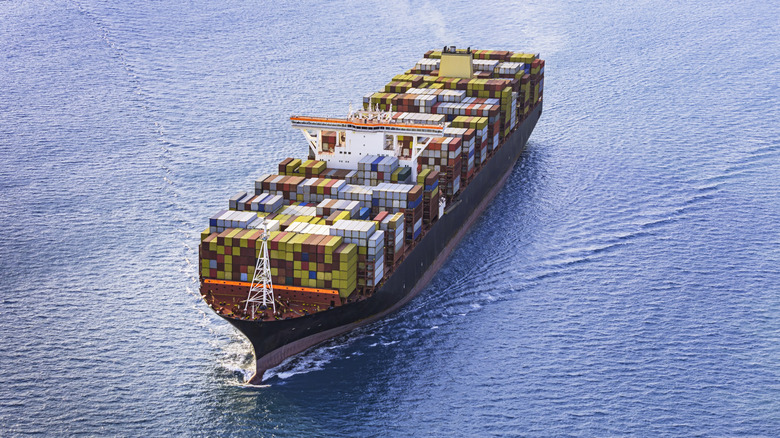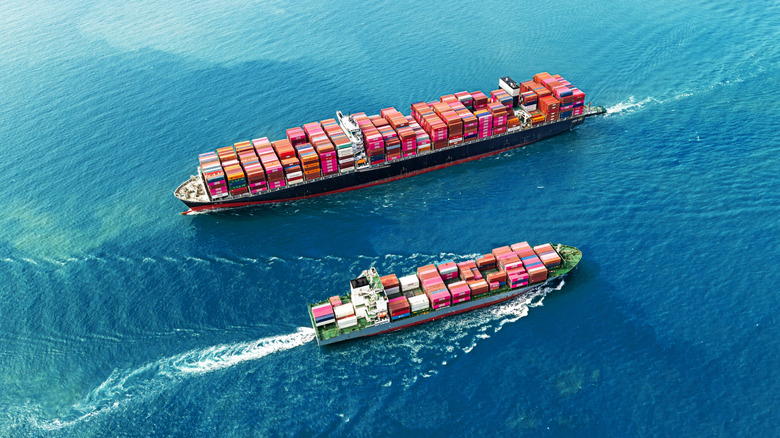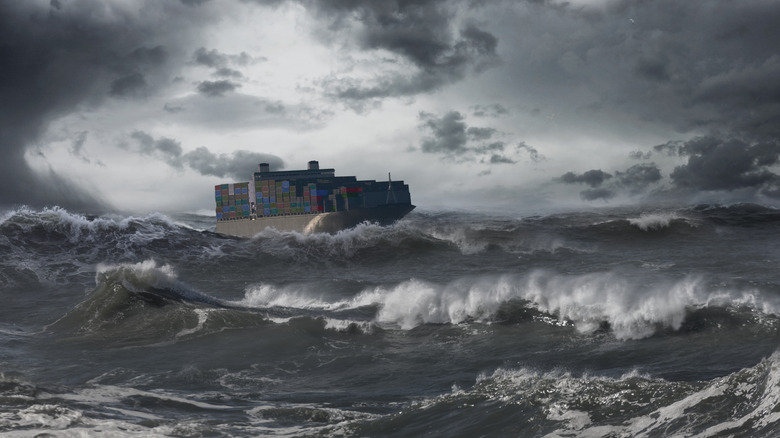How Long Does It Take A Cargo Ship To Cross The Pacific?
Cargo ships are the lifeline of global trade, and the Pacific Ocean is one of their busiest highways. Every single day, dozens of massive vessels carry everything from one port to another, be it electronics and furniture to cars and coffee beans between Asia, the Americas, and beyond. It wouldn't be an exaggeration to say that these ships are the ones keeping the international businesses moving, keeping shelves stocked, and supply chains moving. But when you look at that wide stretch of blue on a map, it's easy to wonder: how long does it actually take one of these ships to make the journey?
The short answer is it depends, just like the cargo ships moving across the Atlantic. Some routes are fairly quick, taking just over two weeks if the trip is direct and the weather plays nice. Others can stretch well beyond a month, especially if the ship makes several stops along the way or runs into delays at ports. So, you can say that there's no single timetable for a Pacific crossing, but there are a few key things that shape how long it takes.
Typical routes and how long they take
Talking about the most standard cargo trips across the Pacific, they take somewhere between 15 to 30 days. For example, a ship going directly from Shanghai to U.S. West Coast ports
will usually take around 16 to 18 days. That said, if the trip includes several ports along the way, the time it will take to cross the Pacific can grow quickly. Multi-stop trips, like those that include several countries or swing through the Panama Canal, can stretch up to 30 days.
There are a few well-known routes that give a good idea of what to expect. For instance, a ship leaving Balboa, Panama, and heading to Auckland, New Zealand usually takes about 18 days. But if it starts from the U.S. East Coast instead of Panama, add 8–10 more days because of the extra distance and the Panama Canal crossing. Meanwhile, a vessel sailing from Vancouver to Shanghai might take around 27 days, while a return trip from Pusan, South Korea, to Seattle is relatively quicker, taking around 12 days.
What slows down a cargo ship?
A few things can really slow down the speed of a cargo ship, and port congestion is one of the biggest reasons. Take the busy hubs like Los Angeles and Long Beach, for instance, where ships can wait up to two or even three weeks just to unload, especially during peak seasons.
The weather also plays a big role in deciding how long the journey will take, as sometimes, typhoons or rough storms can delay a ship by three to seven days. Then come the ocean currents, like the North Pacific Current, which can either push a ship forward or slow it down by a day or two. Even fuel-saving practices like "slow steaming" can add to the travel time. Here, the ships go slower, around 14-18 knots, to burn less fuel. At this pace, you save money and emissions, but the trip naturally takes longer.
Most people don't know, but they can also travel on the cargo ships as passengers. If you're thinking of traveling as well, expect a very different pace. Most trips for travelers last between 14 to 28 days, depending on the route, and cabins are limited. Booking one usually takes 6 to 12 months of planning, and costs run around $100 to $150 a day. And while it's not luxury travel, it's a unique experience for anyone who wants to cross the Pacific in a different way.


